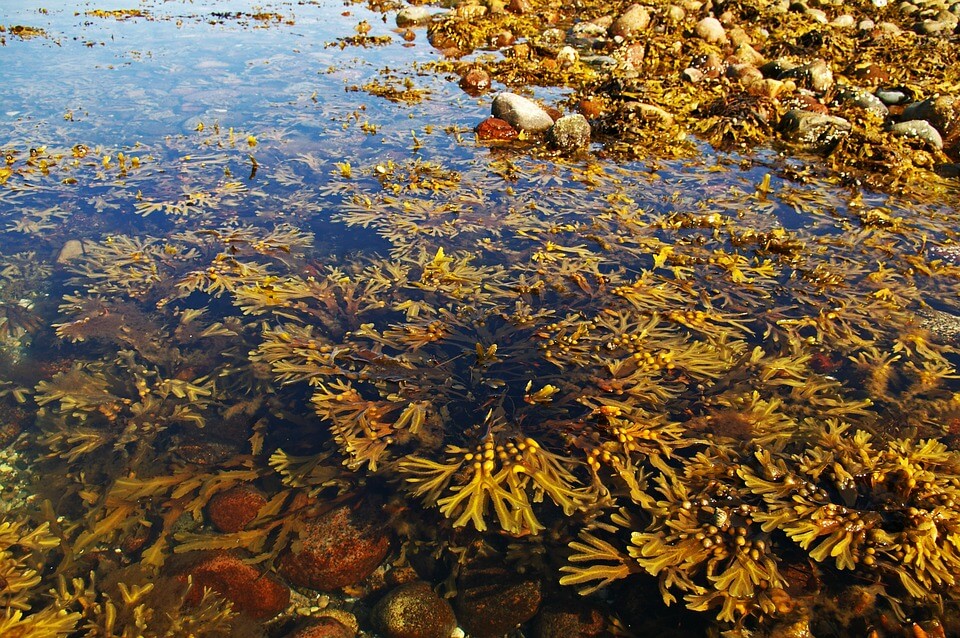Restoring the (Vegetation) Balance

Vegetation is essential for a healthy aquatic habitat, but too much of the wrong kind of vegetation has adverse effects on that environment. In order to maintain the balance that enhances habitat quality, vegetation control programs should target nuisance plants and avoid harming desirable ones.
Herbicides are safe solutions for selective removal of vegetation, as long as they’re applied correctly and regulations are followed.
Aquatic Vegetation
Even underwater plants produce oxygen during photosynthesis, where sunlight, water and carbon dioxide combine to produce plant tissue. That process provides a major source of oxygen for aquatic animal life.
Plants are also an important part of the aquatic food chain, with both microscopic plants (algae), or phytoplankton, and larger algae and flowering plants — macrophytes — providing food sources for zooplankton, insects, fish, waterfowl and mammals. Plants also provide habitat and shelter for fish, waterfowl and other wildlife.
When Aquatic Vegetation Is Harmful to Habitat
Aggressive vegetation growth and invasive species are threats to the overall health and sustainability of aquatic habitat, as overgrowth impedes the oxygen, food and habitat benefits plants offer.
Plants produce oxygen through photosynthesis, but they also consume it through respiration, especially at night. Excessive growth causes plants to use more of the oxygen, leaving less available to fish. Lack of oxygen is fatal for fish, while low concentrations of oxygen over time can weaken them, leaving fish susceptible to disease and toxins.
Another harmful outcome for aquatic habitat can occur when the amount of light that penetrates through the water is reduced by vegetation covering the surface. Less light is able to reach lower levels, hindering photosynthesis and the oxygen it produces; as movement allows de-oxygenated water to reach the surface, oxygen levels are lowered throughout the water body.
Chemical Control
While chemical control isn’t the only method for managing aquatic vegetation, it’s an effective way to remove undesirable plants, especially certain invasive species. The application of herbicides in public and private waters is regulated by federal and state laws.
Algicides and aquatic herbicides registered with the United States Environmental Protection Agency (EPA) don’t harm fish and wildlife when they’re used as directed. These herbicides are applied in very low doses, only persist in the water for a few days, and don’t bioaccumulate in the fatty tissues of humans or animals.
Most herbicides kill vegetation either through contact or translocation. Contact herbicides kill plant tissue quickly; they can be used for spot treatments — absorbed where they’re applied. Copper algicides, endothall and diquat are contact herbicides.
Systemic herbicides enter the plant through the leaf tissue and then move into other plant parts, such as tubers and rhizomes, before the plant is killed. This method is slower than the spot treatment with contact herbicides, but it tends to have a more permanent effect.
Chemical Application
Certain chemicals work on specific plants, so it’s important to identify specific plants and choose the right herbicide. If the herbicide doesn’t refer to aquatic use, it’s illegal to use it around water — the label is the law.
Directions need to be followed carefully. They can include waiting periods before water can be used for drinking, livestock or irrigation, which will impact on the choice of herbicide for a specific site. Instructions about the recommended dosage should be strictly followed.
The time of year is also critical. Usually late spring is the best time, when plants are actively growing and most vulnerable to aquatic herbicides. Applying herbicides later in the summer presents a risk to fish, as killing vegetation may deplete the oxygen in the water at that time of year. Water temperature is another factor; herbicides don’t work in cold water.
More than one treatment may be required in the same season and almost certainly in subsequent seasons, as plants can regenerate from dormant seeds and underground structures that aren’t affected by herbicides.